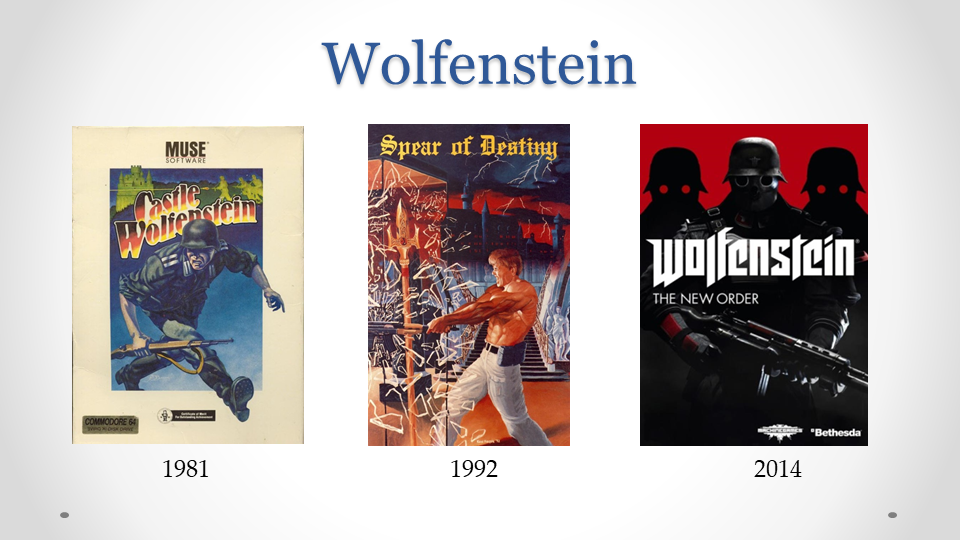One of the greatest challenges of using video games in the college classroom is one of access. Games and the technology required to play them can be expensive, but issues of access go beyond the financial. What if some of my students don’t play games? What if Student A is only familiar with PC gaming but Student B only ever touches a keyboard with reluctance? When talking about video games and education, educators must consider all elements of access including cost, gaming literacy (including peripheral literacy), and student background.
Because of my concerns about access, I typically take advantage of free-to-play and inexpensive indie titles when using video games in the first-year composition classroom. My institution provides a computer lab for each composition section; however, the technology in these labs are usually pretty dated, and even if the computers could run a game as demanding as Fallout 4, the process of installing software on these machines is complicated.
While I enjoy using indie titles and the games available from the Internet Archive with my students, I don’t allow the cost of AAA titles to deter their inclusion in the classroom. After all, most of my students are more familiar with the latest Call of Duty and Forza than they are with Darkest Dungeon and Emily is Away Two.
But if cost is a major issue, in what ways can we include AAA video games in the classroom? As a teacher of rhetoric and composition, my mind immediately goes to the discourse surrounding games–an aspect of play that serves a significant role in how I teach with games. As an example of this, I’d like to share a presentation I gave this past spring with my friend over at A New Game Plus. My friend and I attended a small conference in Illinois where we presented “Punching Virtual Nazis: Video Game Social Commentary in the Classroom.” Our topic grew from the conversations resulting from Far Cry 5‘s initial promotional image, the controversial marketing campaign for Wolfenstein II: The New Colossus, and general questions in gaming circles such as “Should games address politics?”

We began our presentation by talking about social commentary in games and the impact of indies and AAAs, from Ms. Pac-Man to Papers, Please. We then explored the discourse surrounding Far Cry 5 and Wolfenstein II. Just as we briefly discussed the history of both franchises during our presentation, I would do the same with my students. We would discuss cover art, marketing material, public response, and the games themselves to begin tackling the commentary that games like Far Cry contain. I believe this is a great starting point for the analysis of video games as it brings together a number of elements and showcases games in their public context, encouraging a wider lens through which to view games.
After going through some of the history of these franchises, we then talked in-depth about the marketing campaigns behind each game and the public response found in online spaces including YouTube, Twitter, and the comment sections of various gaming media sources. The following visuals serve as examples of the conversations stemming from Far Cry 5 both before and after its release.

Search results and comment sections like these are perfect spaces to begin analysis of the impact of games with our students. Of course Far Cry 5 and Wolfenstein II are obvious examples since their marketing campaigns were so controversial. But it may be beneficial to begin with the blatant before moving to games with more subtle commentary and messages.

When looking at the complexities of games through rhetoric, social commentary, and politics, the possibilities for instruction begin to multiply. What’s great about a social commentary approach to video games is the number of ‘texts’ available for free. My friend and I had no issue finding sources for our presentation and sample assignments–commentary on AAA games is abundant. Another advantage of looking at marketing material and online discussions is that it can engage students with the kinds of textual analysis more traditionally found in the rhet/comp classroom, thus providing a lower point of entry for educators beginning to use video games in the classroom. After all, examining online response to a video game is probably far less intimidating than playing Far Cry 5 with your students.
Helping fellow educators was one of our reasons behind presenting on this topic to begin with. We wanted to demonstrate that while playing video games will obviously enrich student experience, it is not always necessary. As a graduate student and TA, I am as restricted as anyone when it comes to getting technology and resources for my students. However, these restrictions don’t have to limit my approach in the classroom. They just force me to be inventive.
In closing, I’d like to enforce the idea that video games have a place in the college classroom, perhaps particularly in composition as games are rhetorical in nature and much of the material and conversations surrounding games are rich for analysis and learning. I’ve provided a link to one of the sample assignments (Visual Analysis) we showed during our presentation. Please note that the prompt is still a draft, but I thought it might demonstrate the kind of assignment that could come from engaging with social commentary and games.
If you have any thoughts, please let me know in the comments below! I’m always eager to discuss how and why I use video games in my teaching and am open to ideas and suggestions.

Leave a comment